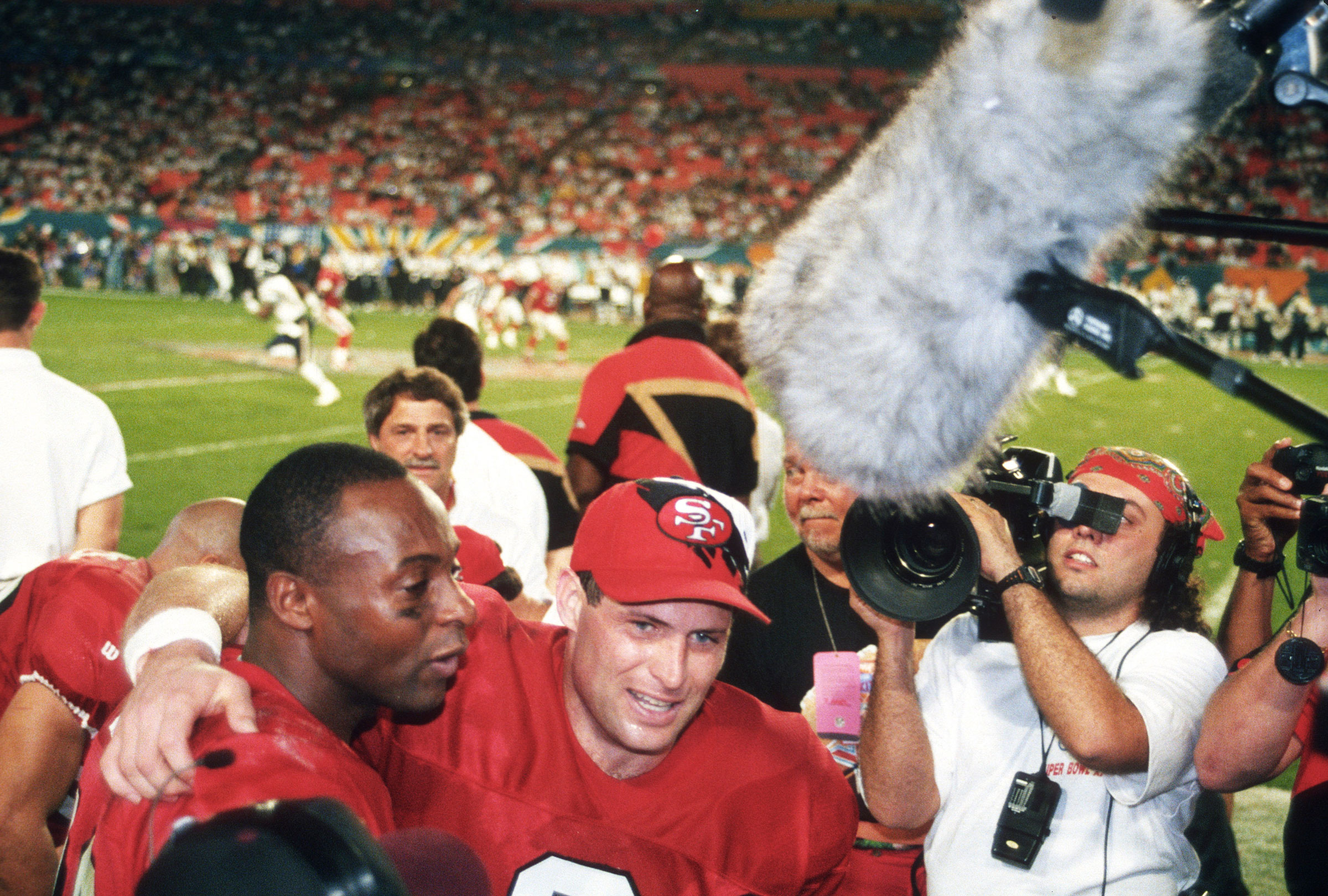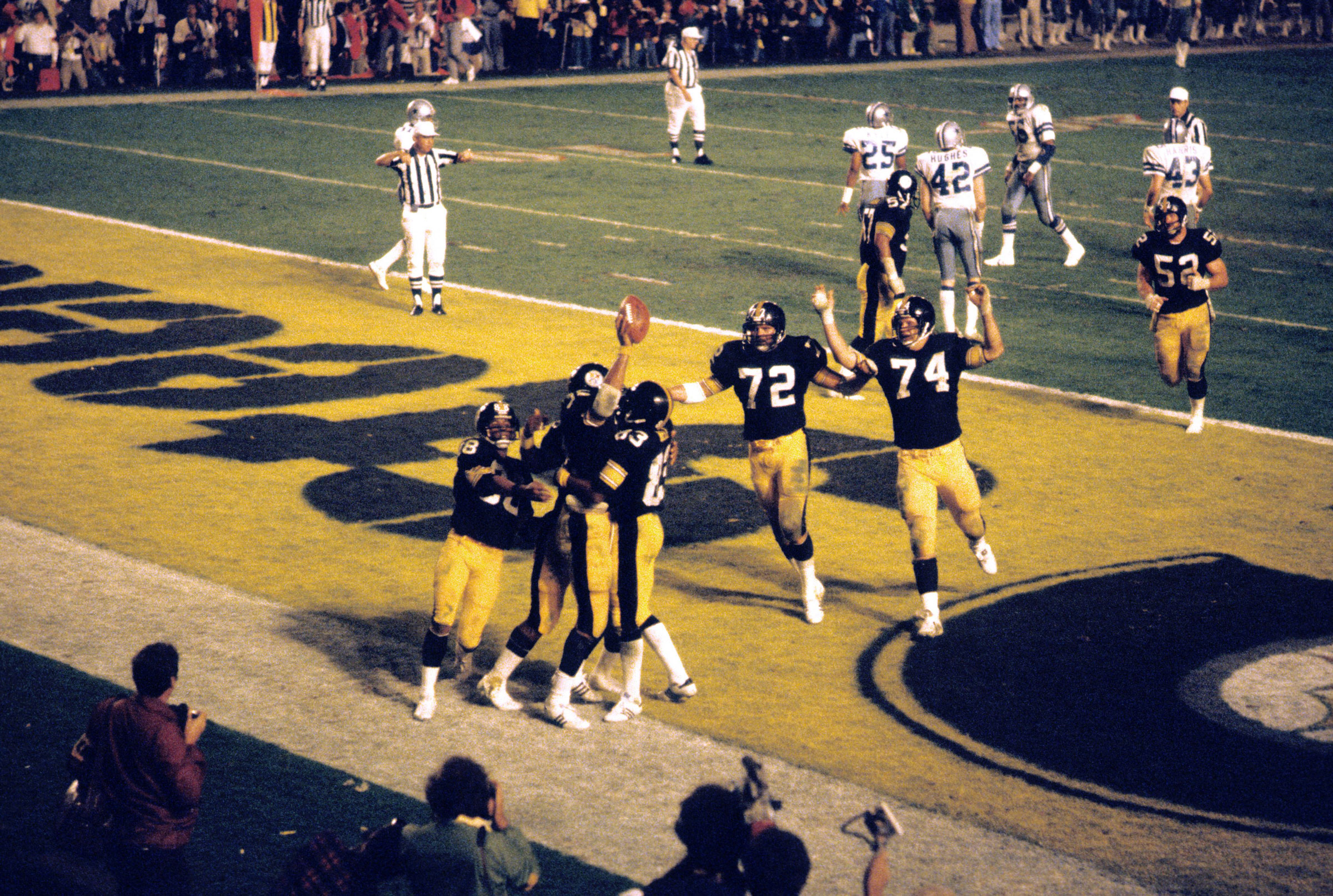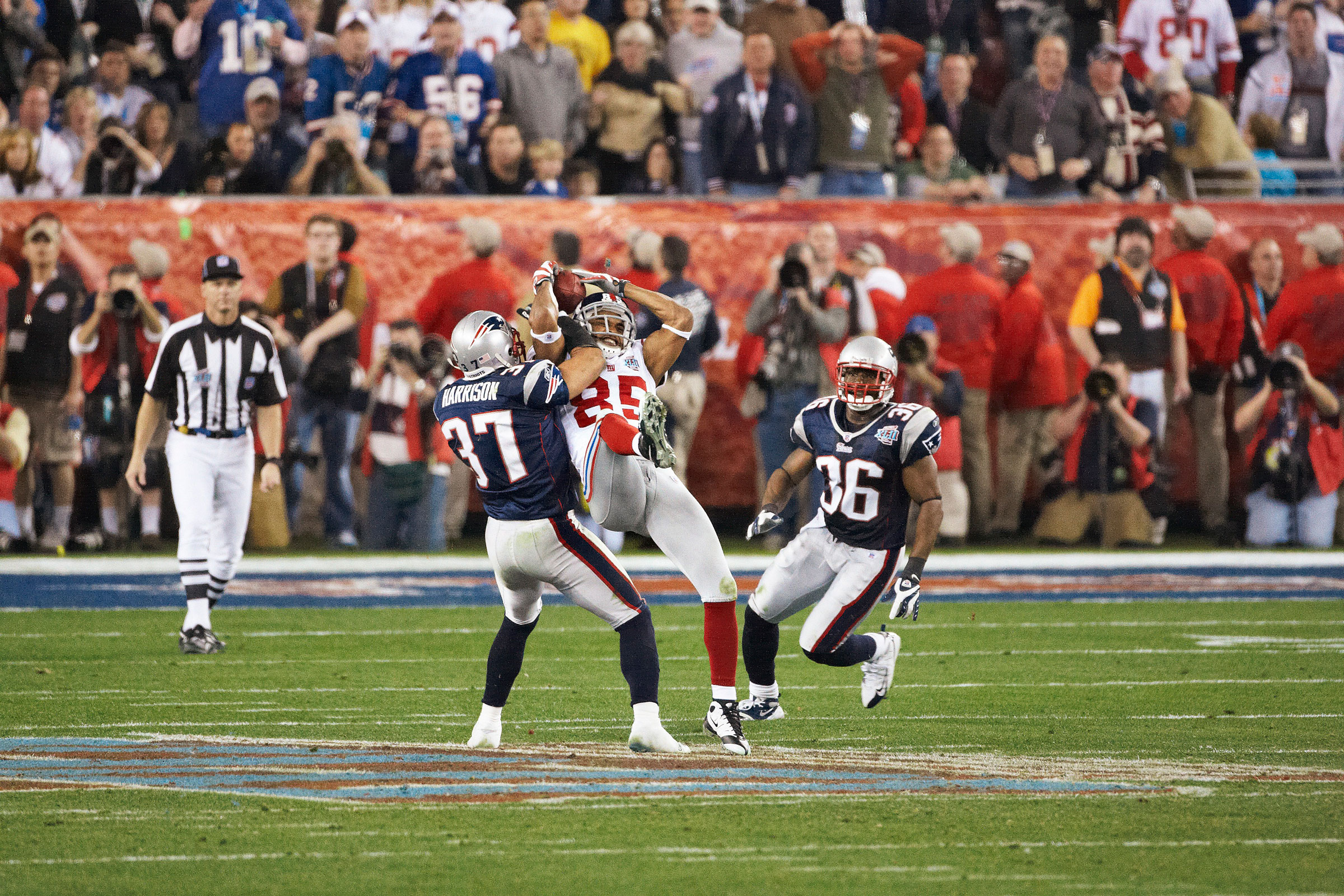
views
The nachos are resting in a big yellow bowl. Your fanny sinks into your friend’s fluffy couch. Super Bowl Sunday kickoff has finally arrived. You’re pumped, for all of it: the game, the ads, the halftime show, the party.
But come the third quarter, you’re already halfway out the door. Two weeks of endless hoopla and hot takes for this?
Super Bowl clunkers are, sadly, all too common. These games offer little action, or drama, and deflate a crowded living room. Tearjerker commercials and a catchy halftime concert can only do so much. The Super Bowl is about football, fundamentally.
Read More: Soda and Cigarettes: Behind-the-Scenes Photos of the Kansas City Chiefs in Super Bowl I
So a bad game spoils Super Sunday. On the flip side, a game that comes down to the final few plays—after a host of stellar performances from standout players—can have you buzzing into next week and beyond. We’re on a nice roll right now. Two years ago, a late touchdown gave the Los Angeles Rams a 23-20 victory over the Cincinnati Bengals. In last year’s game, the Kansas City Chiefs overcame a 10-point halftime deficit and kicked a field goal with eight seconds to clinch a 38-35 win over the Philadelphia Eagles. The Chiefs are back again on February 11 in Super Bowl LVIII, going for a third championship in five years. They’re taking on the San Francisco 49ers, in a rematch of Super Bowl LIV, a 31-20 Kansas City triumph, the team’s first of the Patrick Mahomes era.
Will the string of good games continue? Or are we due for disappointment?
To whet your appetite for either outcome, here’s TIME’s totally infallible list of the best and worst Super Bowls ever. We’ll start with the downers, so that the piece ends on a high note.
Just like Sunday’s game, hopefully.
4. Super Bowl XLVIII: February 2, 2014, Met Life Stadium in East Rutherford, N.J.
Seattle Seahawks 43, Denver Broncos 8

Coming into this game, everyone fretted about the forecast, as this were the first outdoor Super Bowl staged in a cold-weather area. New York can be a slushy hellhole in February. But Mother Nature abided by the NFL’s game plan. Skies were clear, and kickoff temperature was a calm 49 degrees.
Read More: The History of the Super Bowl
Turns out the trains—and the Denver Broncos—didn’t deliver. Before and after the game, thousands of fans got stuck on congested platforms, as public-transit officials underestimated the demand for rides. And on Denver’s opening play, center Manny Ramirez snapped the ball past the head of Broncos QB Peyton Manning into the end zone: the goof resulted in a Seattle safety, and the Seahawks took off from there. Seattle held a 22-0 halftime lead. The margin ballooned to 36-0 in the third.
As if to further punish New York for the whole affair, a snowstorm started six hours after the game, dropping six to eight inches on the area.
3. Super Bowl XXXV: January 28, 2001, Raymond James Stadium in Tampa, Fla.
Baltimore Ravens 34, New York Giants 7

Ever notice all the people who are wistful for the Super Bowl XXXV quarterback matchup between Trent Dilfer of the Baltimore Ravens and Kerry Collins of the New York Giants that 84 million viewers witnessed? Of course not. Because truly no one is.
Baltimore’s defense was the star of that Super Bowl, which made for a pretty lopsided game. The most memorable moment actually unfolded a few days prior to kickoff, when Baltimore’s Shannon Sharpe interrupted Ray Lewis’ interview session with the press to chastise the media for asking Lewis questions about his 2000 arrest for double murder—Lewis later pleaded guilty to obstruction of justice in connection with the stabbing deaths of two men—rather than questions about football, thus ensuring the arrest would remain in the headlines.
2. Super Bowl XXIV: January 28, 1990, Superdome in New Orleans
San Francisco 49ers 55, Denver Broncos 10

Denver lost three Super Bowls in four years, each by a comfortable margin. But none was more comfortable than this one. While the Broncos actually had a halftime lead against the Giants in their 39-20 defeat in Super Bowl XXI, and a first-quarter advantage before giving up 35 points to the Washington Redskins in the third quarter the next year, John Elway’s team had no hope against the Niners. Joe Montana hit Jerry Rice for a 20-yard touchdown pass on San Francisco’s first drive, and the 49ers never looked back, running out to a 27-3 halftime edge. Rice would finish with three TD grabs and 148 yards receiving on the day. Montana collected his third Super Bowl MVP award, finishing with 297 passing yards and five TD throws.
Elway would avenge his ‘80s Super Bowl mishaps a decade later, when he ended his career winning back-to-back Super Bowls. But the Broncos of that era were synonymous with bad Super Bowls. It was time to exit stage left, so the Buffalo Bills could take over that role.
1. Super Bowl XXIX: January 29, 1995, Joe Robbie Stadium in Miami
San Francisco 49ers 49, San Diego Chargers 26

This, I will admit, is a little personal. (Still, these rankings are indisputable.) Somewhat inexplicably, I grew up in New York City in the 1980s pulling hard for the San Diego Chargers. They had a high-flying offense early in the decade, Dan Fouts had an impressive arm (and beard), and the beauty of the lighting helmets cannot be denied. I believe, with confidence, that I was the only kid with a San Diego Chargers Starter jacket within the five boroughs circa 1987. (If you can prove me wrong, holler.) So I rejoiced when the Chargers finally made the Super Bowl in 1995. I thought I’d never see that day. I couldn’t wait to watch the game.
And then … the Chargers proved what many pundits had been chirping about in the two weeks leading up to Super Bowl XXIX: they didn’t belong on the same field as the Niners, who by then were led by future Hall of Famer Steve Young. That year’s NFC championship game, between the Niners and the two-time defending champion Dallas Cowboys, was the real Super Bowl.
Read More: Prepare to Spend an Average of $12,240 on a Super Bowl Ticket
On the game’s third play from scrimmage, Young hit Rice in stride for a 44-yard TD strike. Rice reached the end zone untouched. The game got easier for the Niners from there. Young threw six TD passes, a Super Bowl record that still stands. The Chargers have never made it back to the Super Bowl—good luck, Harbaugh! — and wound up ditching San Diego for L.A., a city that needed a second football team like another traffic jam. What a brutal day. The worst.
4. Super Bowl XXXIV: January 30, 2000, Georgia Dome in Atlanta
St. Louis Rams 23, Tennessee Titans 16

“The Greatest Show On Turf” — a nickname given to the high-powered offense of the Rams — took a 16-0 lead against Tennessee about halfway through the third quarter of Super Bowl XXXIV, when Kurt Warner hit Torry Holt for a nine-yard TD score. But the Titans, who had relocated from Houston (where they were the Oilers) after the 1996 season, weren’t quite ready for a Rams coronation. They charged back, on the strength of a couple of short Eddie George goal-line TDs runs, and an Al Del Greco field goal tied the game at 16-16 with just over two minutes left.
The Rams, however, responded. Warner threw a long ball down field to wide receiver Isaac Bruce, but left it a tad short. Bruce adjusted his route to snare it, and sprinted to the end zone for an iconic 73-yard score.
The Titans had one last chance to tie the game and nearly made the most of it. On the last play of the game, from the St. Louis 10 yard line, Titans QB Steve McNair hit Kevin Dyson inside the five. As Dyson started his run, Mike Jones of St. Louis grabbed Dyson’s legs, bringing him to the ground. Dyson desperately stretched his arm, and the ball, toward the goal line, trying to break the plane. But he was already down on his backside. One yard short, in an incredible Super Bowl ending.
3. Super Bowl XIII: January 21, 1979, Orange Bowl in Miami
Pittsburgh Steelers 35, Dallas Cowboys 31

In the first Super Bowl rematch in history, Pittsburgh edged out “America’s Team” to win a then-record third Super Bowl title, cementing the Steelers as a bona fide ‘70s dynasty. (Pittsburgh would add a fourth title the next season.) In a game featuring a record 18 Hall of Fame players, Steelers QB Terry Bradshaw stood out as MVP. He threw for 318 yards and four TD passes, both records at the time. The combined points scored by the teams, 66, set another record.
The lead changed hands in the first half, before a seven-yard TD pass from Bradshaw to Rocky Blier gave the Steelers their second advantage, 21-14. Dallas was set to tie the seesaw affair again in the third, when Roger Staubach dropped back and threw a 10-yard pass right to tight end Jackie Smith, who could not have been more open in the end zone. But Smith—one of the 18 Hall of Famers—slipped and failed to cradle the ball. "Oh, bless his heart,” said the Cowboys radio play-by-play announcer, none other than the great Verne Lundquist. “He’s got to be the sickest man in America.” Dallas settled for a field goal.
In the fourth, a Franco Harris 22-yard TD run got the Terrible Towels waving. Pittsburgh now had a 28-17 lead, and on the ensuing kickoff, another Dallas Hall of Famer made a surprise blunder: Cowboys defensive end Randy White picked up a squib kick, tried to run, and then dropped the ball before Tony Dungy of Pittsburgh hit him. Pittsburgh recovered, and Bradshaw hit a leaping Lynn Swann for an 18-yard TD score that seemed to put the game away. Dallas, however, scored a TD, recovered an onside kick, and put another touchdown on the board, to cut it to 35-31. But Blier recovered a final onside try by Dallas, with some 20 seconds left, to finally clinch the game for Pittsburgh.
Before the classic game, Cowboys linebacker Thomas “Hollywood” Henderson said of Bradshaw: “"He couldn't spell cat if you spotted him the C and the A." Afterward Bradshaw’s virtuoso performance, a reporter asked Henderson if Bradshaw was smarter than Henderson had thought. "I guess he is,” said Hollywood, who snorted liquified cocaine during the third quarter. “He is the world champion."
2. Super Bowl XLII: February 3, 2008, University of Phoenix Stadium in Glendale, Ariz.
New York Giants 17, New England Patriots 14

The stakes were so high—and the result so stunning—that this game belongs in any discussion of the all-time greats. The New England Patriots came rolling into Super Bowl XLII with a perfect 18-0 overall record. They were seeking to become just the second team, after the 1972 Miami Dolphins, to finish an entire season undefeated. The Giants, who needed to win three road playoff games to make it to Arizona, were 12-point underdogs. That’s still the largest spread of the last 20 years.
The Giants held a 10-7 lead in the fourth quarter, before Tom Brady hit Randy Moss for a six-yard touchdown with 2:42 left in the game to give New England a 14-10 advantage. On a third and five on the ensuing Giants possession, Manning dropped back to pass. New England defenders Richard Seymour and Jarvis Green got their hands on Manning, but they couldn’t bring him down. Manning heaved the ball downfield. Both Giants wide receiver David Tyree and New England safety Rodney Harrison leaped for it: Tyree got his fingers on the ball, and tucked it against his helmet, securing the now famous “Helmet Catch” to keep the touchdown-or-die Giants drive alive. Four plays later, New York wide receiver Plaxico Burress burned New England's Ellis Hobbs, and found himself wide open in the end zone. Manning hit him with a 13-yard strike to give New York the game-winning score with 39 seconds left. After a few final Tom Brady Hail Marys dropped to the ground, the game was over, New England’s perfect dream destroyed.
“I remember calling that fourth quarter on the Burress touchdown and I felt like my heart was going to jump out of my chest,” Joe Buck, who called the game on Fox, said in a 15th anniversary oral history. “This was just an incredible game that you knew people were going to dissect for years to come,”
1. Super Bowl XLIX: February 1, 2015, University of Phoenix Stadium in Glendale, Ariz.
New England Patriots 28, Seattle Seahawks 24

For its head-spinning plot twist in the final seconds, Super Bowl XLIX is our pick as the best of all time. The game came off the heels of Deflategate, in which the New England Patriots were accused of mucking with the footballs during the AFC Championship Game (spurring Bill Belichick to name-drop Mona Lisa Vito in a press conference, one of his finest moments as Pats head coach). New England also hadn’t won a Super Bowl since beating the Philadelphia Eagles in 2005, having lost to the Giants twice. The Seahawks, the defending Super Bowl champs, were on the verge of delivering the potential death knell to the Belichick-Brady dynasty.
With his team trailing 28-24, and the game’s final minute approaching, Seattle QB Russell Wilson had completed a 33-yard pass to Jermaine Kearse, giving Seattle a first-and-goal at the New England five. Kearse’s acrobatic grab—a tipped ball fell into his hands, and he juggled it while lying on the ground, before finally cradling it—was bound to join the “Helmet Catch” in Super Bowl lore. All Seattle had to do was give the ball to “Beast Mode,” Marshawn Lynch, Seattle’s bulldozing star running back, to score a short touchdown and clinch the repeat championship. On first down, Lynch nearly got in the end zone. But the Pats stopped him inside the one-yard line. He was almost there. One more handoff, most likely, and this thing was over.
But instead of going back to Lynch, Seattle opted for a pass play. Wilson threw to a slanting Ricardo Lockette; New England’s Malcolm Butler, a rookie free agent, jumped the pass and picked it off, giving New England a miracle win.
“I absolutely cannot believe that play call,” said Cris Collinsworth, speaking for everyone, on the NBC broadcast. “Every once in a while, in the NFL, you think you’ve seen it all.”
We haven’t. Never will. And who knows what’s in store for Sunday.
https://time.com/6629436/best-worst-super-bowls-all-time/
























Comments
0 comment